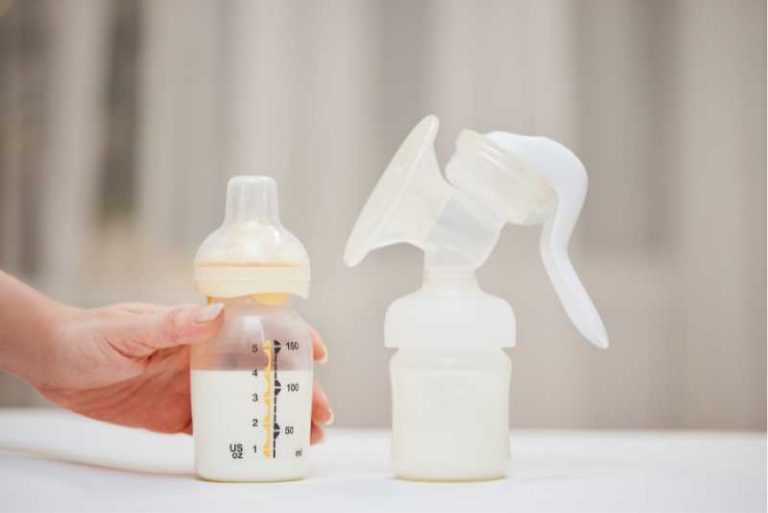How Long Can Tuna Salad Sit Out At Room Temperature?
How long can tuna salad sit out? Are you wondering how long tuna salad can sit out before it becomes unsafe to eat? With a likely combination of mayonnaise and other ingredients, many people are worried that having tuna salad at room temperature is simply too risky.
According to guidelines from the United States Department of Agriculture (USDA), tuna salad should not be left out of the refrigerator for longer than 2 hours. However, if the temperature is above 90 °F, it should not be left out more than 1 hour.
What Happens If The Tuna Is Left Out Longer Than 2 Hours?
If you leave your tuna salad at room temperature longer than 2 hours this can result in the growth of harmful bacteria, including Staphylococcus aureus, Salmonella Enteritidis, Escherichia coli O157:H7, and Campylobacter.
These bacteria flourish in temperatures between 40°F and 140°F, a range commonly referred to as the “Danger Zone.” Within this temperature range, bacterial populations can double in just 20 minutes, significantly increasing the potential for food poisoning.
What If You Still Eat The Tuna Salad After This Timeframe?
It’s not advisable to eat tuna salad that has been sitting out at room temperature for 2 hours or more. The risk of bacterial growth and potential food poisoning increases significantly during this time.
If you’re not sure how long the tuna salad has been sitting out it’s best to be on the safe side and throw it away. Making a fresh tuna salad take no time at all, not to mention it will be a lot more tasty both flavour and texture.
How Should Tuna Salad Be Stored?
To ensure the freshness and safety of tuna salad, it should be stored properly using the following guidelines:
- Refrigerate promptly: After preparing or serving tuna salad, promptly store any leftovers in the refrigerator. This helps to slow down bacterial growth and maintain the quality of the salad.
- Use container, or plastic wrap: Store the tuna salad in an airtight container to prevent contamination from other foods and to retain its freshness. You can also use plastic wrapping or tinfoil to keep it covered.
- Maintain appropriate temperature: Keep the tuna salad in the coldest part of the refrigerator, ideally between 32°F and 40°F (0°C and 4°C). This temperature range helps to inhibit bacterial growth and prolong the shelf life of the salad.
By following these storage guidelines, you can help preserve the freshness, flavor, and safety of your tuna salad while minimizing risk of any illness.

How Long Before Tuna Goes Bad In The Refrigerator?
Fresh Tuna
When it comes to fresh tuna, proper storage is crucial for maintaining its quality and preventing spoilage. Here’s what you need to know about storing fresh tuna in the refrigerator:
- Whole or filleted fresh tuna: If properly stored, fresh whole or filleted tuna can last for 2-3 days in the refrigerator. To maintain its freshness, wrap the tuna tightly in plastic wrap or aluminum foil and place it in the coldest part of your fridge, typically at the back or on the bottom shelf.
- Fresh tuna steaks: Similar to whole or filleted tuna, fresh tuna steaks can last for 2-3 days in the fridge when stored correctly. Wrap each steak individually in plastic wrap or aluminum foil and store them in the coldest part of the refrigerator.
Canned Tuna
Canned tuna is a pantry staple for many households due to its long shelf life and convenience. Here’s how to store canned tuna in the refrigerator:
- Unopened canned tuna: When stored in a cool, dry place, unopened cans of tuna can last for several years, with expiration dates typically ranging from 2-5 years. There’s no need to refrigerate unopened canned tuna.
- Opened canned tuna: Once opened, canned tuna should be transferred to an airtight container and refrigerated immediately. When stored properly, opened canned tuna can last for 2-3 days in the fridge.
What Are The Signs That Your Tuna Salad Is Bad?
Being able to identify the signs of spoiled tuna salad is essential for ensuring food safety and avoiding foodborne illnesses. Here are some key indicators that your tuna salad may have gone bad:
- Unpleasant odor: A strong, sour, or rancid smell is often the first sign that your tuna salad has spoiled. Fresh tuna salad should have a light, pleasant aroma with no off-putting odors. If you notice an unpleasant smell, it’s best to discard the salad.
- Discoloration: Spoiled tuna salad may exhibit discoloration, such as a dull, darkened, or gray appearance. Fresh tuna salad should maintain its original color, which typically includes a mix of white, pink, or light brown shades, depending on the ingredients.
- Slimy or mushy texture: If your tuna salad feels slimy or excessively mushy when touched, it could be a sign of bacterial growth or spoilage. Fresh tuna salad should have a moist but firm texture.
- Mold growth: Visible mold growth is a clear sign that your tuna salad is no longer safe to eat. Mold can appear in various colors, including green, blue, white, or even black, and may not always be present on the surface. If you suspect mold growth, discard the tuna salad immediately.
- Off taste: If you’re unsure whether your tuna salad has gone bad, tasting a small amount can help you determine its freshness. A spoiled tuna salad may have a sour, bitter, or otherwise off taste. However, it’s essential to rely on other signs as well, since taste alone may not accurately indicate spoilage, and consuming spoiled food can lead to illness.
To ensure food safety and avoid potential health risks, always pay attention to these signs and discard any tuna salad that exhibits indications of spoilage. Additionally, follow proper food storage guidelines and consume perishable items like tuna salad within their recommended timeframes.
Conclusion
So there you have it now you know how long your tuna salad can sit out for! In the end if your unsure how long its been sitting out , again just make a fresh batch just to be on the safe side!






